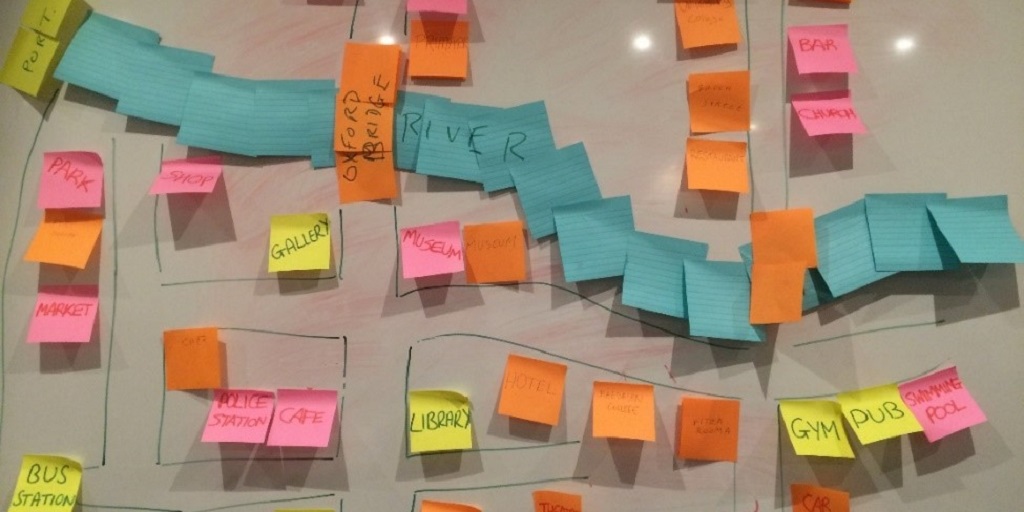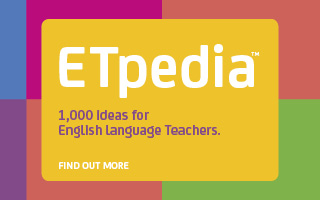10 ways to personalize your lessons
Personalization is when students use the language in the context of their own lives; for example, perhaps they give a presentation about something based on their own knowledge or experience. It’s also when they express their own opinion on a topic and respond with a viewpoint. Generally, most teachers agree that personalization is a good thing because the emphasis is on making language learning relevant to the learner so it’s more motivating and therefore more memorable.
1 Find out about your students from day one
On the first day of a new course it’s common sense to spend time on finding out about your students. You want to learn about them as people (e.g. their interests, hobbies etc.) as well as knowing more about why they are learning English and how they like to learn. That way you can adjust the course as much as possible to suit their own needs and interests. You could ask students to fill in a questionnaire on the first day of class. Alternatively, first-day getting-to-know-you activities which involve students interviewing each other and doing activities which involve sharing personal information are an obvious starting point. (For more ideas on this, see Unit 9 in ETpedia.)
2 Personalize the course book
If you are following a course book, think about how you can make the content more personal. For example, I was recently using a page from a course book on the language of giving directions. The setting for the language presentation was a map showing the centre of the city of Atlanta. Students listened to a conversation with people asking for directions and followed them round the map. I was using the material with students who were going to live in the city of Oxford so once I’d finished the material in the book, I brought in maps of Oxford and the students practised using the language in the context of giving each other directions round Oxford. Finally, they created a new city using post-it notes on the board (see below) and then gave directions around it. In other words, when using the course book, you can always build on the ideas in the book and make the tasks more personal.

3 Choices of topics
Ask students to suggest topics they would like to talk about in class from time to time and then find readings or videos related to their chosen topics – perhaps something in the news - and write your own comprehension questions and/or discussion points.
4 Personalized language practice
As well as personalizing topics in class, we can ask students to personalize any new language once it’s been presented. So if you have presented a grammatical structure such as the past simple, and if students have practiced using the new tense in a controlled way (e.g. through a gapfill exercise), then follow this up by asking students to write some sentences about their own past history using the past simple.
5 Personalized language input
Teachers who work in the areas of English for Specific Purposes are already familiar with the idea that you provide students with the language that they need to use in their own lives. But we can also set students a task and give them the language they need to complete it. So if a student wants to tell a story from their own life, the teacher inputs the language the student needs rather than the language listed in the curriculum.
6 Show and tell
Following on from the previous tips, a ‘show and tell’ activity is a good way to combine relevant topics with relevant language. Over the period of a term, ask individual students to prepare and give a short presentation about something important in their own life; it could be a personal object from home that they tell the class about or maybe a particular hobby they have. You will need to help the student by providing any unknown words or improving the wording of their presentation. For this reason, it’s worth asking students to prepare their presentation, let you see and hear it (either face to face or as a recording), then you give personal feedback so the student can improve the talk before giving it to the whole class.
7 Take your own photograph
Most course books include photographs related to the topic of the lesson or perhaps you use images that you choose to start a lesson. However, sometimes it can be very effective to ask students to take their own photograph and present it to the class. For example, if the unit in your course book is on the topic of ‘Home’ and opens with a photo inside a home, then you could ask students to take a photograph of a room inside their home and then describe it to a partner at the next lesson. If you think some students might feel uncomfortable showing their own home, then they could photograph a house or building that they like in their home town instead.
8 Make your own video
Like taking your own photograph, students could also make short videos. These don’t have to be too elaborate so could include the students talking to a webcam and recording a short monologue about a topic. Or it could be a group of students working together with an iPad to produce a short film. Note that the film doesn’t have to be just something personal or about them. The idea of ‘personalization’ is also about personal choice and decision-making.
9 Allow space for students’ anecdotes
Sometimes in our lessons, we are so focused on language practice that we forget that language is also about real communication. So imagine you are teaching a lesson to practise the structure ‘Have you ever…’ which we use to ask about personal experience. The teacher might present the structure in context of ‘travel’ and then start asking students questions such as ‘Have you ever been to Rome?’ or ‘Have you ever been to New York.’ The teacher wants the students to answer ‘Yes, I have.’ or No, I haven’t.’, so will encourage and correct the students to respond to reply truthfully with the correct form. This is all fine but when a student answers ‘Yes, I have.’ it’s a moment to ask further questions such as ‘When did you go?’, ‘Who did you go with?’, ‘What did you see?’ etc. In other words, the language shouldn’t only be a place to get correct forms of language but also a space for students to talk personally and in this case – tell an anecdote from when they travelled to a place. Be prepared to give them that space.
10 Further ideas and reading on personalization in ELT
There are plenty of other ways to personalize a lesson and there are other blogs which offer further definitions and viewpoints on the topic of personalization. Here some links to some of the most interesting posts (in my ‘personal’ opinion!):
https://scottthornbury.wordpress.com/2012/02/12/p-is-for-personalization/
https://www.teachingenglish.org.uk/blogs/davedodgson/david-dodgson-defining-personalisation
https://adaptivelearninginelt.wordpress.com/category/personalization/
Written by John Hughes; teacher trainer, editor of the ETpedia series, course book author and blogger. His books include ETpedia, ETpedia Business English, and A Practical Introduction to Teaching Training in ELT.

Comments
Write a Comment
Comment Submitted